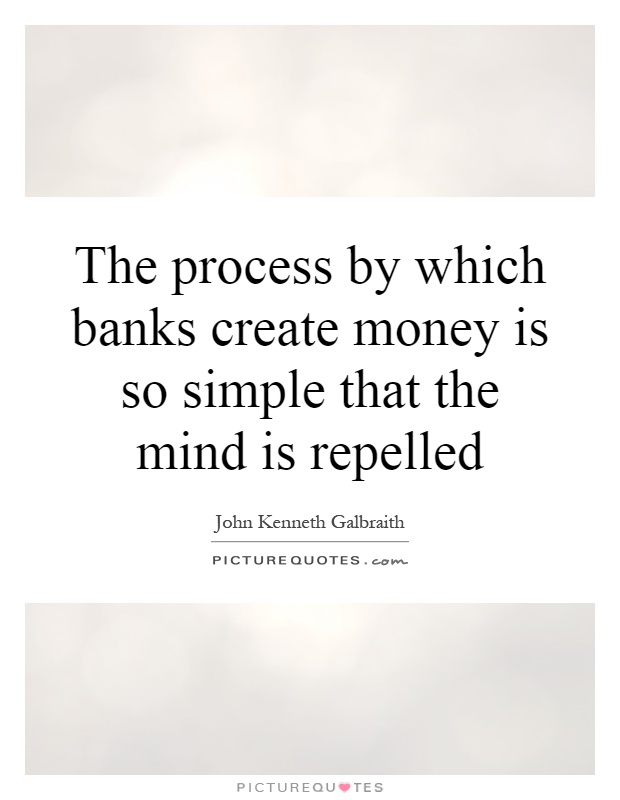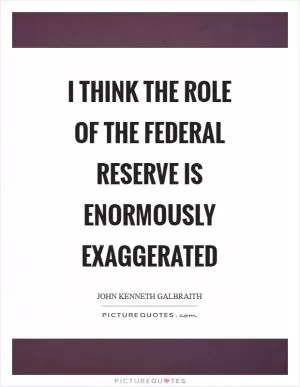The process by which banks create money is so simple that the mind is repelled

The process by which banks create money is so simple that the mind is repelled
John Kenneth Galbraith, a renowned economist and author, once famously remarked that "The process by which banks create money is so simple that the mind is repelled." This statement encapsulates the complex and often misunderstood nature of the banking system and the creation of money within it.In order to understand Galbraith's statement, it is important to first grasp the concept of how banks create money. When a bank makes a loan to a customer, it does not actually lend out existing deposits. Instead, it creates new money by simply crediting the borrower's account with the loan amount. This process, known as fractional reserve banking, allows banks to create money out of thin air, essentially expanding the money supply in the economy.
The simplicity of this process is what Galbraith found so repelling. The idea that banks can create money with just a few keystrokes on a computer screen seems almost too easy, especially when compared to the hard work and effort required by individuals and businesses to earn and save money. This inherent power held by banks to create money has far-reaching implications for the economy and society as a whole.
Galbraith's statement also highlights the potential dangers of this system. If banks create too much money through excessive lending, it can lead to inflation and economic instability. On the other hand, if banks are too conservative in their lending practices, it can stifle economic growth and development. Finding the right balance between these two extremes is a constant challenge for policymakers and central banks.












 Friendship Quotes
Friendship Quotes Love Quotes
Love Quotes Life Quotes
Life Quotes Funny Quotes
Funny Quotes Motivational Quotes
Motivational Quotes Inspirational Quotes
Inspirational Quotes